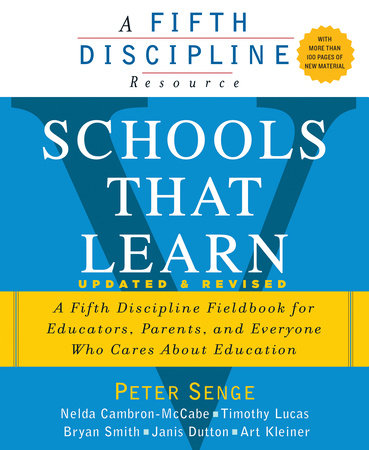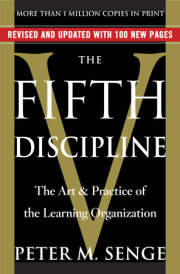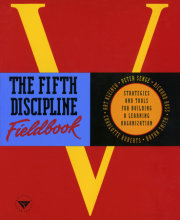1. The Remembered Moment
There was once a young boy who was curious and bright; he had his own way of thinking about things and his own pace for caring about them. School didn't hold much relevance for him because he had other plans, and he was always busy learning. For instance, he collected medallions from every place he visited. Each day, he wore a different one to school around his neck.
One day his teacher said, "Matthew, tomorrow we are going to conduct a science experiment with metals. I bet we could learn something interesting about one of your necklaces." He could hardly wait to tell his parents, and much of the evening was spent discussing which medallion to take to school the next day. Finally he picked one laced with silver, from a trip he had taken with his grandfather. In the morning he was in a hurry to get to school. Returning home that evening, he shared his new scientific knowledge with his parents: metals all transmit electricity differently, and the silver in his medallion made it highly conductive.
The boy is much older now, but he still remembers that day, and he remembers what he learned about electricity. He also remembers the feelings he had--of his personal passions being genuinely interesting to others, of helping others learn, of being seen. The teacher may not remember that particular lesson, but she remembers other times when she made a special connection--sometimes with a student, other times with a mentor, a parent, another educator, or someone else--and came away changed.
Everyone reading this book, no doubt, has had similar experiences--when someone fired your imagination with new knowledge or touched a deep chord in you that opened doorways you didn't know existed. Why do experiences like these hold so much power? Perhaps it's because they are part of our most common birthright as human beings: our entry into life as eager and natural learners. "The drive to learn is as strong as the sexual drive," writes anthropologist Edward T. Hall. "It begins earlier and lasts longer."
Learning is at once deeply personal and inherently social; it connects us not just to knowledge in the abstract, but to each other. Why else would it matter so much when a teacher notices something special about a student? Throughout our lives, as we move from setting to setting, we encounter novelty and new challenges, small and large. If we are ready for them, living and learning become inseparable.
What if all communities were dedicated, first and foremost, to fostering this connection between living and learning? Such a world might feel very different from our own. There would be no boundaries between "school" and "work" and "life." Skillful people, from groundskeepers to accountants to scientists to artisans, would have a steady stream of apprentices, both children and adults. People of every age would continually embark on new endeavors and enterprises, taking failure in stride, readily seeking one another's help. Teenagers would spend most of their learning time outside school walls (as Hall puts it, "with all that energy, they shouldn't be in school"), working on projects with real meaning for them. And children would be everywhere, in civic meetings and business conferences, just as they are present in significant meetings among many indigenous peoples. An innate communitywide culture of learning would lead to fewer quick fixes that seem to work at first but then backfire. The children, the culture, and all everyday practices would continually remind people of the real purpose of our endeavors: to look out for the long term.
Arguably, with the pace of social, economic, and technological change continuing to accelerate, we are already moving into such a world, whether we are ready for it or not. Some critics say that this will make schools irrelevant. We feel exactly the opposite is true. No matter how technologically advanced our world becomes--no matter how many tablet computers they own or how many functions their smartphones perform--children will always need safe places for learning. They will always need launching pads from which to follow their curiosity into the larger world. And they will always need places to make the transition from their childhood homes to the larger society of peers and adults.
That is why a culture dedicated to learning would devote its resources to those institutions that most shape our development as learners. They might or might not resemble the schools we have today. But they would be places where everyone, young and old, would continuously develop and grow in each other's company; they would be incubation sites for continuous change and growth. If we want the world to improve, in other words, then we need schools that learn.
2. The Idea of a School That Learns
Schools that learn are everywhere, at least in people's imaginations. The core idea that has inspired this book--both in its first edition, published in the year 2000, and now in this second edition of 2012--is simple: institutions of learning can be designed and run as learning organizations. In other words, schools can be made sustainably vital and creative, not by fiat or command or by regulation or forced rankings, but by adopting a learning orientation. This means involving everyone in the system in expressing their aspirations, building their awareness, and developing their capabilities together. In a school that learns, people who traditionally may have been suspicious of one another--parents and teachers, educators and local businesspeople, administrators and union members, people inside and outside the school walls, students and adults--recognize their common stake in each other's future and the future of their community.
By now thousands of people in hundreds of schools have accumulated more than three decades' worth of experience in the practice of schools that learn. Much of this experience has taken place under other names: "school reform," "effective schools," "educational renewal," "systems thinking in the classroom," and even in some aspects of "no child left behind." The experimentation continues, and the resulting understanding of the relationship among educators, schools, learners, and communities continues to deepen.
Much of this activity--though by no means all--is grounded in the explicit work with learning organizations that was explored in the Fifth Discipline series of books. The seven Fifth Discipline volumes (counting second editions, including this one) are all based on a single core idea: that it is possible to create organizations that learn through the ongoing practice of five "learning disciplines" for changing the way people think and act together. These disciplines--systems thinking, personal mastery, working with mental models, building shared vision, and team learning--provide a great deal of leverage for those who want to foster and build better organizations and communities.
Leverage
Small, relatively inexpensive, well-focused actions can sometimes produce significant, enduring improvements, if they're in the right place. Systems thinkers refer to this principle as leverage. Tackling a difficult problem is often a matter of seeing where the high leverage lies. Leverage often comes from new ways of thinking. Human systems (such as schools) are particularly prone to being affected in large ways by small changes that are not obvious to most people--because they do not fully understand why the system operates the way it does.
The genesis for the first edition of Schools That Learn was the discovery that this overall approach seems to resonate with educators because it brings together two goals that often seem in conflict: to realize people's deepest aspirations and to foster better long-term educational performance. The results include noticeable improvements in test scores and other extrinsic measures, but, more importantly, they include breakthroughs of the mind and heart.
Whether you are a teacher, an administrator, a parent, or even a student, this book will help you achieve the same in your own school. The volume contains more than 170 pieces of writing by 67 authors. They include tools and methods, stories and reflections, guiding ideas, exercises, and resources that people have adopted to help make institutions of learning more like learning organizations. Many of the articles are intensely pragmatic, geared toward helping teachers, school administrators, or parents solve particular problems. Many of them are deeply reflective, aimed at helping you see the school world as you haven't seen it before, so you can operate within it, or change it, in more effective ways. These articles are not meant to be prescriptive or restrictive--they are easily adapted to a wide variety of circumstances, including higher education and lifelong learning. There are no "top-ten learning schools" in this book; we don't offer profiles of exemplary cases where star educators have figured out their problems in ways that the rest of us can simply copy. Indeed, no school's experience can be applied to another's situation wholesale. All schools, and their situations, are unique and require their own unique combination of theories, tools, and methods for learning.
We call this book Schools That Learn, but we are not limiting our vision to improving single schools or colleges as self-contained individual entities. That's because schools don't exist in isolation; instead they have the potential to be fulcrum points for learning in the communities around them. Sustainable communities need viable schools for all their children and learning opportunities for all their adults. In our view, a learning school is not so much a distinct and discrete place (for it may not stay in one building or facility) as a living system for learning--one dedicated to the idea that all those involved with it, individually and together, will be continually enhancing and expanding their awareness and capabilities.
Introducing the Five Learning Disciplines
Schools that train people only to obey authority and follow the rules unquestioningly have poorly prepared their students for our increasingly complex and interdependent world. Today, people in all walks of life are called upon to act with greater autonomy, to lead as well as follow, to question difficult issues in a safe manner, and to become more conscious of the habits of thought that govern our behavior and shape our prospects.
The five disciplines of organizational learning are ongoing bodies of study and practice that help develop this type of perspective and skill. As many teachers and administrators have noted, the learning disciplines also offer effective ways to deal with the dilemmas and pressures of educational institutions.
Two of the disciplines represent ways of articulating individual and collective aspirations--and using those to set a direction.
Personal Mastery: Personal mastery is the practice of developing a coherent image of your personal vision--the results you most want to create in your life--alongside a realistic assessment of the current reality of your life today. This produces an innate tension that, when cultivated, can expand your capacity to make better choices and to achieve more of the results that you have chosen.
Shared Vision: This collective discipline establishes a focus on mutual purpose. People with a common purpose (e.g., the teachers, administrators, and staff in a school) can learn to nourish a sense of commitment in a group or organization by developing shared images of the future they seek to create and the strategies, principles, and guiding practices by which they hope to get there. A school or community that hopes to live by learning needs a common shared vision process.
Two of the disciplines involve the practice of reflective thinking and generative conversation:
Mental Models: This discipline of reflection and inquiry skills is focused around developing awareness of attitudes and perceptions--your own and those of others around you. Working with mental models can also help you more clearly and honestly define current reality. Since most mental models in education are often "undiscussable" and hidden from view, one of the critical acts for a learning school is to develop the capability to talk safely and productively about dangerous and discomfiting subjects.
Team Learning: This is a discipline of group interaction. Through such techniques as dialogue and skillful discussion, small groups of people transform their collective thinking, learning to mobilize their energies and actions to achieve common goals and draw forth an intelligence and ability greater than the sum of individual members' talents. Team learning can be fostered inside classrooms, between parents and teachers, among members of the community, and in the "pilot groups" that pursue successful school change.
And the final discipline (the "fifth" discipline of the original book) is an extensive body of knowledge and practice for recognizing and managing complexity in the world at large.
Systems Thinking: In this discipline, people learn to better understand interdependency and change and thereby are able to deal more effectively with the forces that shape the consequences of their actions. Systems thinking is based on a growing body of theory about the behavior of feedback and complexity--the innate tendencies of a system that lead to growth or stability over time. Tools and techniques such as stock-and-flow diagrams, system archetypes, and various types of learning labs and simulations help students gain a broader and deeper understanding of the subjects they study. Systems thinking is a powerful practice for finding the leverage needed to achieve the most constructive change.
Part II of this book, starting page 70, is an in-depth primer on the five disciplines.
Educators have told us that the learning disciplines sound great, and then they asked, "But what do we do Monday morning? How do we create a sense of systemic awareness or personal mastery within our staff? Is it worth even trying with students? How can we integrate these skills and practices with our existing curriculum and all the changes imposed on us? How do we discover exactly what type of learning classroom or school we wish to create? What do we do about the pressures coming from outside? How do we get started?"
Parents who are familiar with the learning disciplines have similar questions: "How do we use these disciplines to deal with problems like homework or disputes with other children? How do we use them in working with our children's teachers? What kind of relationship can we build between the school and the workplace or other places in the community?"
No book can provide the complete answers to these questions. But a book like this can introduce you to effective ways of approaching the problems. It can offer strategies that are grounded in the collective experience of people in a wide variety of public and private schools, colleges, and universities. And it can show you how to start developing your own strategies. In all, thousands of people, including parents, teachers, administrators, experts, politicians, and students themselves, are evolving together into a worldwide community of organizational learners in education. Those who take on the methods and tools of organizational learning, and who seek to understand the theories that underlie them, typically find they have a huge amount of leverage for change and influence that they did not recognize before and a far better awareness of what changes to push for. And that is fortunate, because together we face an extraordinarily difficult but vital and crucial task: re-creating schools to serve students who will come of age in a postindustrial and increasingly connected world.
Copyright © 2012 by Peter M. Senge. All rights reserved. No part of this excerpt may be reproduced or reprinted without permission in writing from the publisher.










